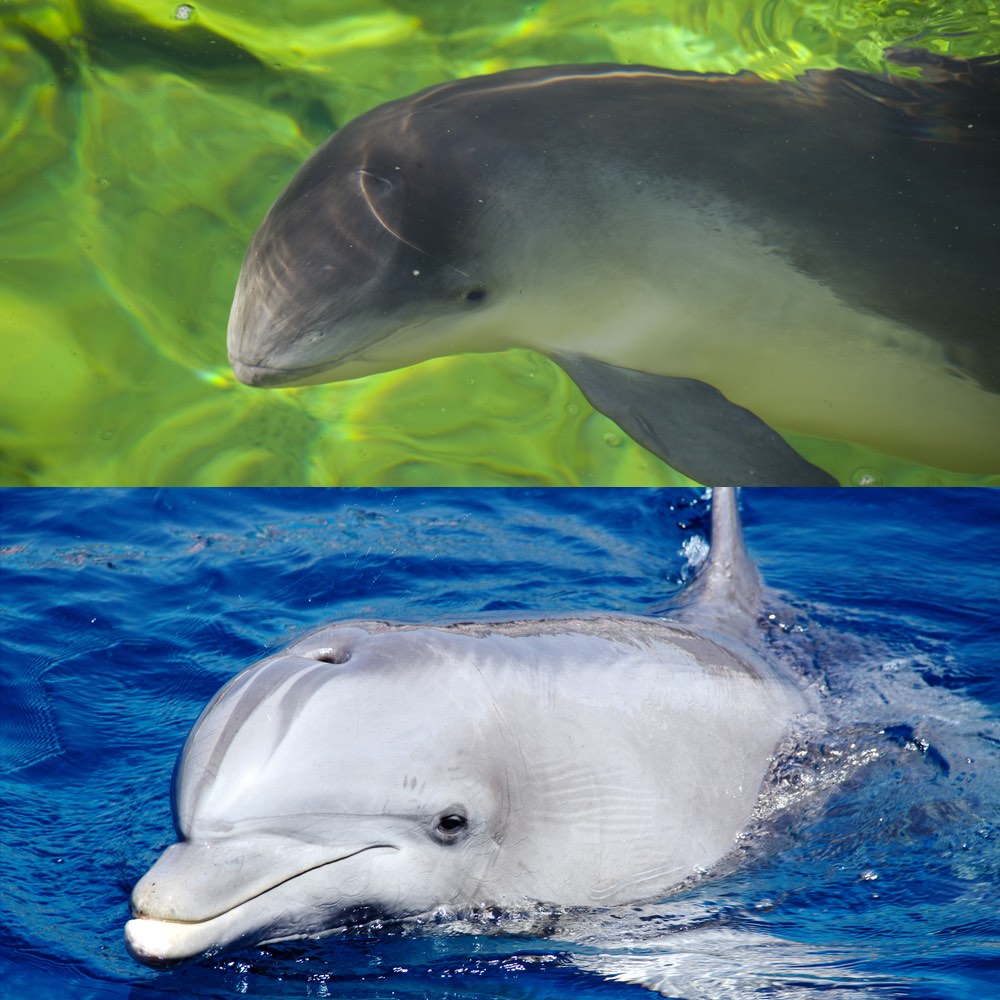
What's the Difference Between Dolphins and Porpoises?

Sitting in your comfy beach chair watching the waves roll in, you spot a dolphin leaping from the water. But wait, is that really a dolphin or are you watching a porpoise's graceful antics?
Turns out, though both names refer to air-breathing, warm-blooded marine mammals, dolphins and porpoises are different species, and even belong to separate genuses (groups of similar species).
If you want to become an expert at telling the difference the next time you spot one in the ocean, first look at the animal's grin … if you can make it out. While dolphins have elongated "mouths" or "beaks," porpoises have shorter, smaller grins, according to the National Oceanic and Atmospheric Administration (NOAA). And if you ever get a chance to see their teeth, dolphins sport a set of cone-shaped chompers, while porpoises' teeth are spade-shaped, according to NOAA.
The dorsal fin, the one in the middle of the back, may be a key differentiator of the marine mammals, at least for sunbathers who may catch just a glimpse of the animal. Dolphins have a curved, or hooked, fin, while porpoises are equipped with a triangular one, NOAA says. "Generally speaking, dolphin bodies are leaner, and porpoises' are portly," according to NOAA. [Deep Divers: A Gallery of Dolphins]
And dolphins take home the prize for the more gregarious of the cetacean groups. The animals talk to each other underwater by making whistling sounds through their blowholes; scientists don't think porpoises make these whistles, according to NOAA.
There are six porpoise species, according to research published in 1995 in the journal Molecular Phylogenetics and Evolution:
- Harbor porpoise (Phocoena phocoena)
- Burmeister's porpoise (Phocoena spinipinnis)
- Vaquita porpoise (Phocoena sinus)
- Spectacled porpoise (Australophocaena dioptrica)
- Dalls porpoise (Phocoenoides dalli)
- Finless porpoise (Neophocaena phocaenoides)
And dolphins are grouped into 32 different species, according to NOAA.
Sign up for the Live Science daily newsletter now
Get the world’s most fascinating discoveries delivered straight to your inbox.
Regardless of their slightly different looks, dolphins and porpoises are both considered brainy creatures and they both have a melon, a structure in the forehead that they use to produce sound waves for navigating their watery homes.
Original article on Live Science.
Jeanna Bryner is managing editor of Scientific American. Previously she was editor in chief of Live Science and, prior to that, an editor at Scholastic's Science World magazine. Bryner has an English degree from Salisbury University, a master's degree in biogeochemistry and environmental sciences from the University of Maryland and a graduate science journalism degree from New York University. She has worked as a biologist in Florida, where she monitored wetlands and did field surveys for endangered species, including the gorgeous Florida Scrub Jay. She also received an ocean sciences journalism fellowship from the Woods Hole Oceanographic Institution. She is a firm believer that science is for everyone and that just about everything can be viewed through the lens of science.










